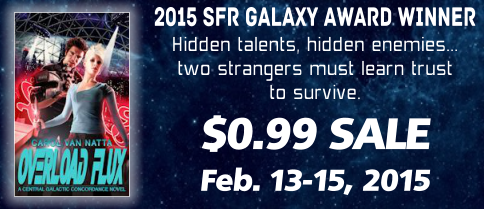Carol Van Natta's Blog, page 31
May 17, 2015
7 Things About Me as a Writer
There’s this thing going around the intertoobz, wherein an author is challenged to provide “7 Things About Me as a Writer.” Below is mine.
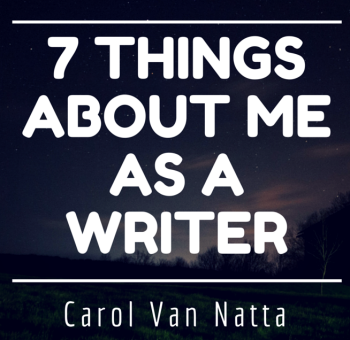
I am in respectful awe of “pantser” writers who can write a whole book from start to finish with just a vague notion in mind of where the story ought to go. I’m a “plotter,” complete with outlines and a timeline spreadsheet, and would like to be better at it, because I am (so far) a slow writer. This is in puzzling opposition to Thing #2.
I read fast and voraciously, and like to hoard own my books. I’d guess I read about 250 fiction books a year, and 99% of them are in digital form. I still love the kinesthetic feel of books in my hand, but I’m more fond of being able to take one small Kindle on vacation, instead of an extra suitcase just for the books.
Overload Flux and Minder Rising (out by the end of May!), the first two books in the Central Galactic Concordance series, are actually prequels to the main story arc. I wanted to test the waters, and my own skills, before plunging into the full, complex saga I have in mind. There is one more prequel coming, too, and maybe a novella. And yes, I have a master outline for it all (see Thing #1).
 My muse’s home base is science fiction, but it likes to visit fantasy, mystery, suspense, and action-adventure. My muse is also an incurable romantic, so every idea I have always includes a little romance. And in the case of the CGC series, it’s woven throughout each book.
My muse’s home base is science fiction, but it likes to visit fantasy, mystery, suspense, and action-adventure. My muse is also an incurable romantic, so every idea I have always includes a little romance. And in the case of the CGC series, it’s woven throughout each book. I make a godawful book reviewer, because I just can’t be objective about another writer’s book—I know how much time and effort goes into producing it. I make a pretty good beta reader, though, for the genres I like.
My co-author and I invented the internet. Quit laughing and let me explain. Our first novel, Hooray for Holopticon , was written one summer back in the dawn of time (OK, around 1990). We shopped it to major publishers, who all turned us down. It’s a well-plotted comedic romp, but most of the wonderful technology we delighted in creating has come to pass, including the internet, email, and computer viruses. Fast forward to 2009, and the dawn of respectable indie publishing. We had this dandy manuscript sitting in our virtual desk drawer, so we published ourselves in 2009 and market it as a retro SF comedy.
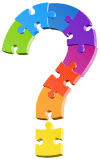 My characters and stories often come from questions. For example, in Overload Flux, Luka Foxe comes from the question, “What if the very talent that makes you brilliant is killing you?”, and Mairwen Morganthur’s question is “What if you didn’t think you were human?”. In Minder Rising, field agent Lièrén Sòng has to decide what to do when he discovers he’s been wrong about a lot of things. The whole Central Galactic Concordance story arc centers around how we as a species deal with evolutionary change.
My characters and stories often come from questions. For example, in Overload Flux, Luka Foxe comes from the question, “What if the very talent that makes you brilliant is killing you?”, and Mairwen Morganthur’s question is “What if you didn’t think you were human?”. In Minder Rising, field agent Lièrén Sòng has to decide what to do when he discovers he’s been wrong about a lot of things. The whole Central Galactic Concordance story arc centers around how we as a species deal with evolutionary change.So that’s it, my 7 things.
The post 7 Things About Me as a Writer appeared first on Carol Van Natta - Author.
May 16, 2015
OVERLOAD FLUX – Award Finalist
Thanks to the reader judges for selecting Overload Flux (A Central Galactic Concordance Novel) as a finalist for the Readers’ Crown 2015 Award in the Science Fiction/Fantasy/Time Travel category. I’m in with some pretty high-powered talent, so it really is an honor to be nominated. The awards will be announced June 15.
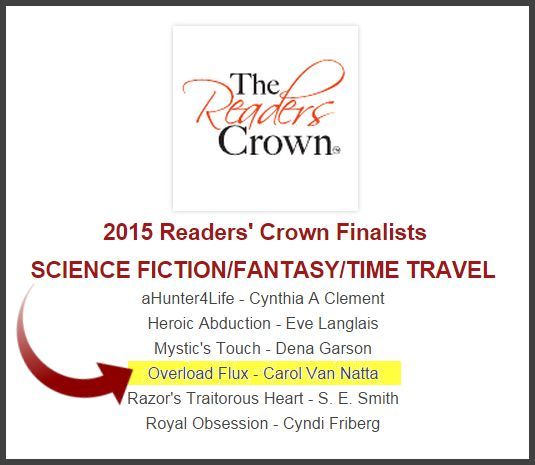
The post OVERLOAD FLUX – Award Finalist appeared first on Carol Van Natta - Author.
May 9, 2015
Galactic News Trends
Or, What I’ve Been Up to that I Haven’t Been Around Much
Galactic news trends, in the Central Galactic Concordance universe, are the trending news topics that everyone in the civilized galaxy is talking about. Because it’s my universe, I can pretend that it’s news that a Certain Author disappeared from her blog for awhile, but is back.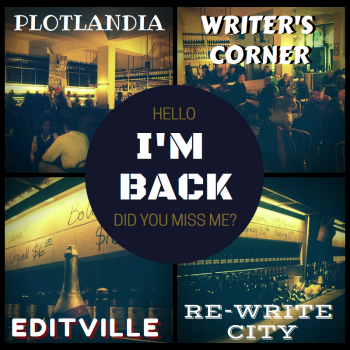
Where, you might ask, has she been? She’s been on a whirlwind tour of Plotlandia, where plots are hatched, Writer’s Corner, where the work gets done, Editville, where she and others make things better, and Re-Write City, where things get, well, rewritten to make them better.
The book she took on her tour is Minder Rising, the second in the CGC series. It still needs to go to Fort Illustration, for a lovely cover, and Saint Blurbia, where the much-harder-than-you’d-think-it-should-be book description gets written.
And then, the final destination: PUBLISH!
If the author gods are smiling on Certain Author, that last leg of the journey will happen by the end of this month.
And what’s on your agenda for the merry month?
The post Galactic News Trends appeared first on Carol Van Natta - Author.
April 12, 2015
Genres Are A Reader’s Friend
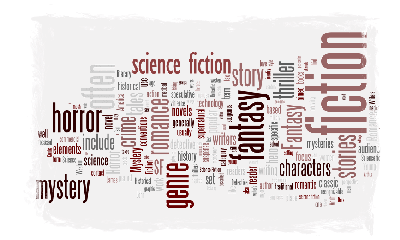 A classic Saturday Night Live fake commercial had Dan Akroyd and Gilda Radner arguing about whether a new product, Shimmer, was a floor wax or a desert topping, only to have spokesperson Chevy Chase reveal that it’s both. If you’ve never seen it, watch it here.
A classic Saturday Night Live fake commercial had Dan Akroyd and Gilda Radner arguing about whether a new product, Shimmer, was a floor wax or a desert topping, only to have spokesperson Chevy Chase reveal that it’s both. If you’ve never seen it, watch it here.
I feel that way about genres. They’re both a reader’s friend, and a straightjacket.
Genres Are a Reader’s Friend
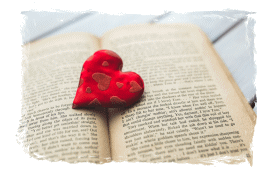 To me as a reader, genres are my friend. I read a lot, and have wide-ranging tastes, but some stories aren’t for me. I know from experience that I won’t like them—they’ll bore me or make me unhappy. Genres offer me a way to narrow my choices at the bookstore, so I don’t have to read the blurbs of every book in the catalog or on the shelf.
To me as a reader, genres are my friend. I read a lot, and have wide-ranging tastes, but some stories aren’t for me. I know from experience that I won’t like them—they’ll bore me or make me unhappy. Genres offer me a way to narrow my choices at the bookstore, so I don’t have to read the blurbs of every book in the catalog or on the shelf.
Genres give me instant context, too. Here’s an example of a book tagline:
A man discovers a hidden garden, and finds himself slowly but surely drawn back into the war.
If I know the genre, the tagline becomes a lot more meaningful. If it’s in memoir, I know the book is about the man’s real-life experiences. If it’s in action and adventure, I’m thinking maybe it involves spies and intrigue. If it’s in science fiction, maybe the hidden garden is actually a dimensional gate.
Genres Are a Straightjacket
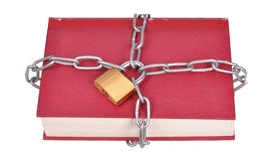 By the same token, genres can become a straightjacket. I grew disenchanted with “young adult” genre some years ago, but I couldn’t put my finger on why until I heard an author repeat what her publisher said about her manuscript: “Speed up the pace, amp up the action, and lose the first-love same-sex relationship between secondary characters, because parents don’t want their kids exposed to that stuff.” It made me realize that too often in the YA genre, killing people is more acceptable than loving them.
By the same token, genres can become a straightjacket. I grew disenchanted with “young adult” genre some years ago, but I couldn’t put my finger on why until I heard an author repeat what her publisher said about her manuscript: “Speed up the pace, amp up the action, and lose the first-love same-sex relationship between secondary characters, because parents don’t want their kids exposed to that stuff.” It made me realize that too often in the YA genre, killing people is more acceptable than loving them.
Most genres have a few rules that authors break at their peril. Westerns better be set in the American West, and have an action-oriented plot, and often involve justice. Compare Riders of the Purple Sage and Little House on the Prairie, for example. I don’t read Christian fiction, but I’d imagine it has to involve characters who have or find faith. Romance means main characters falling in love, and who get a happily-ever-after or happy-for-now ending. Don’t make me get out my keyboard and leave you a one-star review because you added a surprise tragic ending and called it a romance.
I love cross-genre and multi-genre books stories, but the author has to meet reader expectations for all its genres for it to work for me. Romantic suspense should have a romance—not just romantic elements—and an action-oriented plot. Science fiction mystery should be grounded in science (real, speculative, or imaginary) and have a juicy puzzle for the readers to solve along with the main character(s).
What do you think about genres?
* * * * *
The post Genres Are A Reader’s Friend appeared first on Carol Van Natta - Author.
March 29, 2015
Buy Ebooks at Your Local Independent Bookstore
Most people still read paper-based books, but the number of ebooks read is growing every year, and the number of people who say they mostly buy ebooks also growing. I heard a recent statistic that says 75% of book sales are for paper/hardbound. In early 2014, Amazon announced that ebooks made up 30% of its book sales. Barnes & Noble doesn’t like to talk about it, apparently, because I can’t find articles that talk about trends they’re seeing.
I’m one of the converts to ebooks and ereaders, especially for fiction. Whereas I still love the kinesthetic feel of books, I love even more the ability to carry 500 of them around in one little device, instead of having to lug around an extra suitcase on vacation just for the books. The side effect of this, however, is that I just don’t spend as much time and money in my local bookstores. I’m not alone, which is why bookstores, already on thin margins, are struggling.
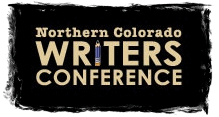
Up until I went to the annual Northern Colorado Writers Conference a couple of days ago, I thought my favorite independent bookstores, such as Old Firehouse Books in Fort Collins, or The Tattered Cover in Denver, were left out of the ebook paradigm shift. B&N has the Nook (however shamefully they neglect it and its users), and Amazon doesn’t partner with anyone because they’re the 800-pound gorilla.
Smart, Upstart eBook Seller Partners with Independent Bookstores
 Enter Kobo.
Enter Kobo.
First, a disclaimer: I have no relationship with either independent bookstores or ebook retailers, other than the fact that I adore the former and sell ebooks through the latter. Oh, and I just met Mark Lefebvre, Director of Self Publishing and Author Relations at Kobo at NCW Conference.
Kobo makes ereaders, and they sell digital content. The were a plucky Canadian company that was bought by Rakuten, a Japanese global internet commerce company that also owns a big share of Pinterest. If you live in the U.S., you may not have heard of Kobo, but if you live anywhere else in the world (hello, Canada, Japan, Europe, Australia, and New Zealand, for example), it’s a big player. Their ereaders are cool—they even have one that’s water-resistant, for people who read in the bathtub, or near pools or large bodies of water. Their digital content isn’t as extensive as the ‘Zon, but it’s growing.
 Kobo has an affiliate program for independent bookstores. Buy a Kobo e-reader and register it through the bookstore, and your independent bookstore shares in the profit. Buy ebooks through your registered Kobo, and your favorite bookstore gets a cut. So when you hear about a great new book from the bookstore employee, you can proudly buy it for your ereader, knowing you’re supporting the local business you love.
Kobo has an affiliate program for independent bookstores. Buy a Kobo e-reader and register it through the bookstore, and your independent bookstore shares in the profit. Buy ebooks through your registered Kobo, and your favorite bookstore gets a cut. So when you hear about a great new book from the bookstore employee, you can proudly buy it for your ereader, knowing you’re supporting the local business you love.
 Check out the Indie Bound website for a list of independent bookstore members of the American Booksellers Association who are in the Kobo program: http://www.indiebound.org/ebooks.
Check out the Indie Bound website for a list of independent bookstore members of the American Booksellers Association who are in the Kobo program: http://www.indiebound.org/ebooks.
The post Buy Ebooks at Your Local Independent Bookstore appeared first on Carol Van Natta - Author.
March 19, 2015
SF Thought Experiment: Fun with Total Eclipses
Stephanie J. Pajonas is a science fiction author and Facebook friend, part of the estimable SFR Brigade. She recently posed this question:
“Would it be possible for a [habitable] world to have a large moon that traveled slowly enough around it that it caused long solar eclipses?”
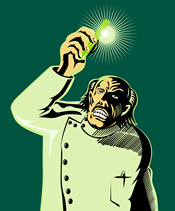 Now me, I have a broad but extremely shallow grasp of astrophysics, but I have the good fortune to live with a mad scientist polymath, who is patiently willing to seriously entertain any number of mad notions by wayward science fiction authors. Here is his answer, paraphrased by me.
Now me, I have a broad but extremely shallow grasp of astrophysics, but I have the good fortune to live with a mad scientist polymath, who is patiently willing to seriously entertain any number of mad notions by wayward science fiction authors. Here is his answer, paraphrased by me.
For the TL;DR crowd, the short answer is: Not likely, but not impossible, under certain conditions. Read below to find out why.
As a side note, there’s a rare event happening on Friday, 20 March, if you’re in the U.K. You’ll see a solar eclipse, a supermoon, and the spring equinox. See this nice article for details and an explanation of each.
And as another side note, NASA has a whole little area of their website devoted to eclipses.
About Total Eclipses
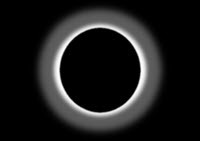 First, some basics, using napkin math approximations. Using our own planet, moon, and sun, eclipses comes down to sizes (diameters), distances, and angles.
First, some basics, using napkin math approximations. Using our own planet, moon, and sun, eclipses comes down to sizes (diameters), distances, and angles.
Earth’s diameter is 12,740 kilometers (km); the moon is 3,480 km, and the sun is 1.39 million km. The distance between Earth and the moon is 384,400 km, and the distance between the Earth and the sun is 1.5 million km.
Next, we need the angular diameter of the moon and sun. That requires trigonometry, which we’ll skip the details of, and get the answer: The moon, as we see it in the sky, is just under 0.5 degrees, and the sun is just a little over 0.5 degrees.
During a total eclipse, where the moon is a black circle with a bright ring of fire (the sun) behind it. The moon’s apparent motion through the sky relative to the sun is about a half degree per hour, so an eclipse lasts about two hours, from leading edge to last contact. Totality, where the moon fully occults (blocks) the sun, is good for maybe 8 minutes.
We could also consider lunar eclipses, where the Earth blocks the sun, but since the moon isn’t habitable unless you bring your own enclosed ecosystem, we’ll skip those for now, even though they’re probably lovely.
Bigger Moon! (No, not the one displayed when you drop your pants)
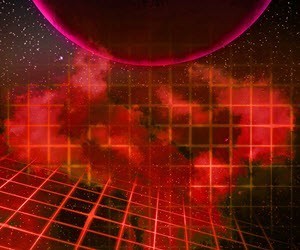 So, what if our moon were bigger and slower? Kepler’s laws state that the closer an object is to a planet, the faster its orbital period. Tiny, close satellites we launch can complete an orbit in 90 minutes; the moon takes 28-29 days. If you wanted a really long eclipse, the moon would be have to be farther away, but then its apparent diameter would be much smaller, and wouldn’t block the sun. If the moon were larger, it would just block the sun altogether, and we’d have, well, nighttime. To get a real eclipse, with a bigger moon, the sun would have to be bigger, too, but life on Earth would require us to fireproof, well, everything.
So, what if our moon were bigger and slower? Kepler’s laws state that the closer an object is to a planet, the faster its orbital period. Tiny, close satellites we launch can complete an orbit in 90 minutes; the moon takes 28-29 days. If you wanted a really long eclipse, the moon would be have to be farther away, but then its apparent diameter would be much smaller, and wouldn’t block the sun. If the moon were larger, it would just block the sun altogether, and we’d have, well, nighttime. To get a real eclipse, with a bigger moon, the sun would have to be bigger, too, but life on Earth would require us to fireproof, well, everything.
So, no long solar eclipses using the Earth, moon, and sun we know and love.
Fun with Total Eclipses of the Third and Fourth Kind
So here’s the fun thought experiment part.
Imagine two similar-sized planets in orbit around each other, with a barycenter, a common central cooordinate. Now take this spinning pair and put them in orbit arond a star. Each planet would present fairly large angular diameters to each other, and solar eclipses would be a lot more common (they’d each be taking turns eclipsing the parent star).
Another possibility for getting a long eclipse is if your planet is an Earth-sized moon in orbit around a Really Big Planet, rather like the planet-moon Pandora orbiting a gas giant in the film Avatar. At the right distances, the big planet eclipsing the moon-planet would quite satisfyingly long. And if there were other moon-planets in orbit around the big one you could get one moon casting a solar eclipse on a neighboring moon. It’d be rare, but cool to think about.
Final note: If you have any questions you’d like to ask a mad scientist, send them to me, and I’ll post the question and answer here.
.
The post SF Thought Experiment: Fun with Total Eclipses appeared first on Carol Van Natta - Author.
March 7, 2015
Future E-reader Features
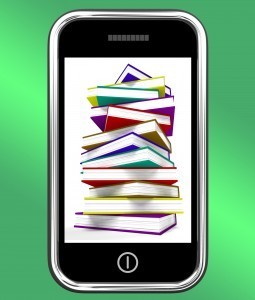 Three Features I’d Like to See in Future E-readers
Three Features I’d Like to See in Future E-readersDear E-reader Manufacturers and User Interface Designers,
First, kudos for inventing e-readers, and for figuring out how to make it easy to get content for them. Independent authors like me wouldn’t have nearly as viable a career without them, and as a reader, I am thrilled to be able to carry 400+ books on vacation in one little device, instead of in one large and heavy extra suitcase.
Now that I’ve owned Kindles for 5+ years, and have gone out of my way to pester friends with other devices to take me on little tours, I have three requests for future features on e-readers.
New E-Reader Feature #1: Blurbs!
I don’t just want to see the book title and author, and maybe the cover art, I want to see the blurb for each of my books. Or at the very least, genre and a tagline. Back in the days of yore when I used to come home with 6 or 8 paperback books after pillaging the bookstore, I’d spread them out on the table and feel contented, like a dragon with gold. Then I’d turn all the books over so I could read the blurbs, to decide what order to read them in. If I later got distracted, or brought home more gold books, I could read the blurbs any time to remind myself what the book was about and why I bought it.
The ease of buying ebooks has increased my to-be-read (TBR) pile from a couple dozen to hundreds, and I’m not exaggerating. Plenty of book titles are downright mysterious if you don’t recognize the author’s name or don’t have the cover image – and sometimes, even when you do. Although it’s a lovely book, What’s In a Name? by Terry Odell is completely mysterious if all you know is the title. Did I mistakenly buy a book on what to name the baby? Nope, from the half-naked man on the cover, it looks like a contemporary romance, which I rarely buy, either. It’s not until I read the blurb that I found out it’s romantic suspense with a complex, breakneck plot. It’s the same problem with Monkey Business by Tymber Dalton. The cover art hints says it’s a romance, but the blurb tells me it’s the first of a post-apocolyptic, non-paranormal erotic romance series.
To be fair, authors and publishers could do better about including genre and series names in the ebook titles, but sometimes that gets really long. If I did that with my first book, the title would be Overload Flux (A Central Galactic Concordance Novel) (Science Fiction-Action-Romance). Yurgh.
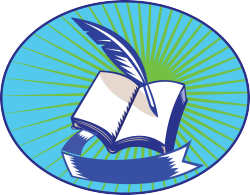 SIDE NOTE to Authors and Publishers: Until the e-reader makers fulfill my request, please, please include the blurb for your book in the beginning. You can still start the book on the first chapter, but give me the option to scroll back and find the blurb. It’s much easier to read it in your book than to have to troll the internet or Amazon’s website (assuming I have a connection) for that information.
SIDE NOTE to Authors and Publishers: Until the e-reader makers fulfill my request, please, please include the blurb for your book in the beginning. You can still start the book on the first chapter, but give me the option to scroll back and find the blurb. It’s much easier to read it in your book than to have to troll the internet or Amazon’s website (assuming I have a connection) for that information.
New E-Reader Feature #2: Custom Sort!
This is applicable to the Kindle, but may well apply to the Nook, Kobo, and other readers. I want to be able to sort the titles on my e-reader in ways you can’t imagine. You give me a choice of purchased/opened date, alphabetical by title, and alphabetical by author, and that’s it. Hah! I’ve had upwards of 400+ books on my e-reader at one time. Your pitiful sort offerings mean I have to scroll through pages and pages and PAGES of entries. And that assumes I remember the exact spelling or correct title. Oh sure, you give me a search field, but again, correct spelling and title. With my paperback books, I can stack them in any order that pleases me. I can have multiple stacks. I can have groups with stacks. With paper, I’m limited to one place/stack/group per book, but in the electronic world, I should easily be able to put a book in more than one stack. And most importantly, I want to name these stacks/groups myself, the same way I could create a bookshelf for paranormal romance, and another for reference books.
New E-Reader Feature #3: Custom Notes! (a.k.a. Metadata)!
To some degree, e-readers allow users to make interior notes, with varying degrees of ease and usefulness. While we’re on that subject, I want to be able to make a note on a bookmark, just like you can with a little post-it note, not just make the digital equivalent of a dog-eared page.
What I really want, though, is the ability to make notes (long or short) about the book itself, such as “Terry would like this book,” or “Beware cliffhanger ending,” or “Prequel to Wossname series,” or “Check out author’s website at http://…” And specifically on Amazon, these notes should stay with the book, even when backed up to the Amazon cloud and removed from the local device. If the author/publisher issues a new version, e.g., one that fixes typos, or now has a new sample from an upcoming book, Amazon should ask me what I want to do about each one. Right now, the choice is all or nothing: either automatic book updates are ON or OFF, for everything in your digital library.
Your loyal customer,
Carol Van Natta
- – – – – – – – – – – – – – – – – – – – – – – – – – – – – – – – – – – – – – – – – –
What new features would you like to see in e-readers?
The post Future E-reader Features appeared first on Carol Van Natta - Author.
February 24, 2015
About Book Content Warnings

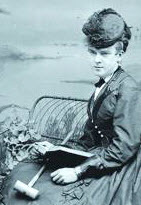 There’s been a controversy brewing for awhile on content disclosure and warnings. As a reader, I tend to favor disclosure, because I like good smexy scenes (if they’re plot-driven) as well as the next person, but I like advance notice. I especially want to know if the sex is non-vanilla and involves dubious consent or rape, force, pain, restraint, humiliation, public setting, multiples (including if it’s MFM or MMF – it’s a world of difference) etc., and doubly especially if it involves the main characters. Bottom line: I want to know what I’m getting into, because there are some things I will definitely read, some I don’t mind, and some I find distasteful and won’t ever read. Stumbling across them unexpectedly makes me testy. The more learned and clever writers and commenters at DearAuthor.com have a more nuanced view. That said, I’m happy that there are readers who like the things I won’t read and that there are authors who will cater to them, because it makes the world a much more interesting place.
There’s been a controversy brewing for awhile on content disclosure and warnings. As a reader, I tend to favor disclosure, because I like good smexy scenes (if they’re plot-driven) as well as the next person, but I like advance notice. I especially want to know if the sex is non-vanilla and involves dubious consent or rape, force, pain, restraint, humiliation, public setting, multiples (including if it’s MFM or MMF – it’s a world of difference) etc., and doubly especially if it involves the main characters. Bottom line: I want to know what I’m getting into, because there are some things I will definitely read, some I don’t mind, and some I find distasteful and won’t ever read. Stumbling across them unexpectedly makes me testy. The more learned and clever writers and commenters at DearAuthor.com have a more nuanced view. That said, I’m happy that there are readers who like the things I won’t read and that there are authors who will cater to them, because it makes the world a much more interesting place.Authors and publishers with an erotica line are mostly pretty good with disclosure this, probably because they were tired of having to refund book purchases from disgruntled readers, either because the book had too much sex, not enough sex, or unexpected sexual practices. Independent authors probably don’t see refunds requests as often, but the readers might be inclined to leave bad reviews if their expectations went unfulfilled. For a recent “readers also bought” book I saw on Amazon, at least 25% of the reviews on Amazon were one star and “Not recommended” because there were two(!) rape scenes involving the heroine that weren’t even hinted at in the blurb, which billed the book as a sexy paranormal romance. With the backlash against 50 Shades of Grey for implying sexual sadism and violence against women is somehow the same as consensual BDSM play, you’d think the author or publisher might have updated the book’s description.
 Some publishers have their own rating systems, but there’s no consensus I could find, so you probably need to check with the publisher to find out what they mean by “sweet,” “sensual,” “steamy,” or “graphic.” Reviewers and book review sites can be good sources of this information if the publisher or author has been coy (and thank you, brave reviewers, for telling me what I’d be getting into). Some of the content warnings are fun and snarky, too, a trend I believe was started by Samhain Publishing, which helps ease the sometimes bitter medicine of needing to give content and trigger warnings.
Some publishers have their own rating systems, but there’s no consensus I could find, so you probably need to check with the publisher to find out what they mean by “sweet,” “sensual,” “steamy,” or “graphic.” Reviewers and book review sites can be good sources of this information if the publisher or author has been coy (and thank you, brave reviewers, for telling me what I’d be getting into). Some of the content warnings are fun and snarky, too, a trend I believe was started by Samhain Publishing, which helps ease the sometimes bitter medicine of needing to give content and trigger warnings.I believe it all comes down to what I expect as a reader, and having my expectations met. It’s true in other areas as well. Rachel Leigh Smith wrote a recent post wherein she pointed out that a book labeled as romance MUST be a romance — main characters who learn to trust and love one another, and have a happily-ever-after (or at the very least, a happy-for-now) ending. “Romantic elements” don’t count. And as she pointed out, an unfulfilled romance AND a cliffhanger, both undisclosed, make readers want to throw the book against the nearest wall, or pound their e-reader with the nearest mallet.
Sneak up on me (or just plain lie to me), and I won’t ever buy your books again. Tell me what I’m getting, and I’ll come along on the ride with you all the way to the end.
The post About Book Content Warnings appeared first on Carol Van Natta - Author.
February 18, 2015
Science Fiction Romance Recommendations
I was having a conversation-by-post with another science fiction romance (SFR) author, Pauline Baird Jones, and we agreed we’re readers as well as writers, and like to recommend books to our friends. I especially like recommending SFR books to my friends because I’d like our relatively new little corner of the genre universe to take over the galaxy. Consider this my part in supporting the rebel alliance.
Recommended Reading in Science Fiction Romance
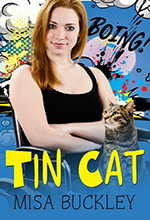 Misa Buckley‘s Tin Cat features a paraplegic heroine who encounters an android cat and two time-traveling men, one of which wants to kill her, and the other to love her. My favorite part of the book is the hero’s willingness to accept that the heroine doesn’t need “fixing.” Ignore the cover that implies it’s a light-hearted comedy, because it’s much better than that. Several of Misa’s other stories also deal with accepting people as they are, a message I appreciate.
Misa Buckley‘s Tin Cat features a paraplegic heroine who encounters an android cat and two time-traveling men, one of which wants to kill her, and the other to love her. My favorite part of the book is the hero’s willingness to accept that the heroine doesn’t need “fixing.” Ignore the cover that implies it’s a light-hearted comedy, because it’s much better than that. Several of Misa’s other stories also deal with accepting people as they are, a message I appreciate.
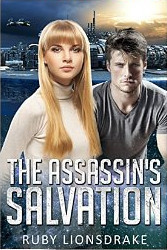 Ruby Lionsdrake writes the Mandrake Company series, starting with Mercenary Instinct, which is currently free on Amazon. “Ruby” is the pen name of successful indie fantasy author Lindsay Buroker. The Mandrake series is space opera and romance, with action and humor that Buroker perfected in her Emporer’s Edge universe. My favorite of the series so far is The Assassin’s Salvation, mostly for the hero, who’s managed to overcome a fairly horrific past. “Ruby” is starting a new SFR dystopian series, which should be out in March.
Ruby Lionsdrake writes the Mandrake Company series, starting with Mercenary Instinct, which is currently free on Amazon. “Ruby” is the pen name of successful indie fantasy author Lindsay Buroker. The Mandrake series is space opera and romance, with action and humor that Buroker perfected in her Emporer’s Edge universe. My favorite of the series so far is The Assassin’s Salvation, mostly for the hero, who’s managed to overcome a fairly horrific past. “Ruby” is starting a new SFR dystopian series, which should be out in March.
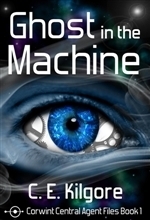 While I’m thinking about series, I’ll mention CE Kilgore‘s Corwint series, starting with Ghost in the Machine. I love the concept of the mechas, a series of service androids made self-determining and emotional by their interaction with an alien race, and by a conspiracy of humans who believe mechas deserve their own destiny. The whole series is addicting.
While I’m thinking about series, I’ll mention CE Kilgore‘s Corwint series, starting with Ghost in the Machine. I love the concept of the mechas, a series of service androids made self-determining and emotional by their interaction with an alien race, and by a conspiracy of humans who believe mechas deserve their own destiny. The whole series is addicting.
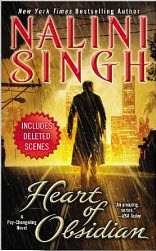 Nalini Singh‘s Psy-Changeling series is a best-seller, and with good reason. Singh bills herself as a paranormal romance author, but the Psy-Changeling series is a nice mashup of alternate history, shifters, and science fiction, plus hot romance. My all-time favorite in the series is Heart of Obsidian, a book I read twice in succession because it was so thoroughly captivating that I wanted to see how she did it.
Nalini Singh‘s Psy-Changeling series is a best-seller, and with good reason. Singh bills herself as a paranormal romance author, but the Psy-Changeling series is a nice mashup of alternate history, shifters, and science fiction, plus hot romance. My all-time favorite in the series is Heart of Obsidian, a book I read twice in succession because it was so thoroughly captivating that I wanted to see how she did it.
Even within the SFR genre, there are sub-genres: space opera, dystopian, etc. C.E. Kilgore has a nice list of them at her SFR Station site, where you can find a treasure trove of new books to read, including steampunk.
It’s embarrassing how many books I have in my virtual TBR pile on my Kindle, so once I wade through some of them, I’ll probably be writing another “you gotta read this” post in the future. UPDATE: OK, maybe it’ll just say “recommended,” because I get a little contrary when people tell me I “gotta” do anything.
If you read science fiction romance, what are some of your favorites?
The post Science Fiction Romance Recommendations appeared first on Carol Van Natta - Author.
February 13, 2015
Action and romance: Overload Flux is on sale!
Overload Flux is on sale!





Looking for a little action and romance this weekend? Overload Flux is on sale, today through Sunday only, for $0.99. That’ll leave you a few extra bucks for bubbly and chocolates.
Overload Flux (A Central Galactic Concordance Novel)
$0.99 (75% off list price) • 13-15 Feb. 2015
Amazon Kindle | Nook | Kobo | Smashwords | iTunes | Google Play
The post Action and romance: Overload Flux is on sale! appeared first on Carol Van Natta - Author.

